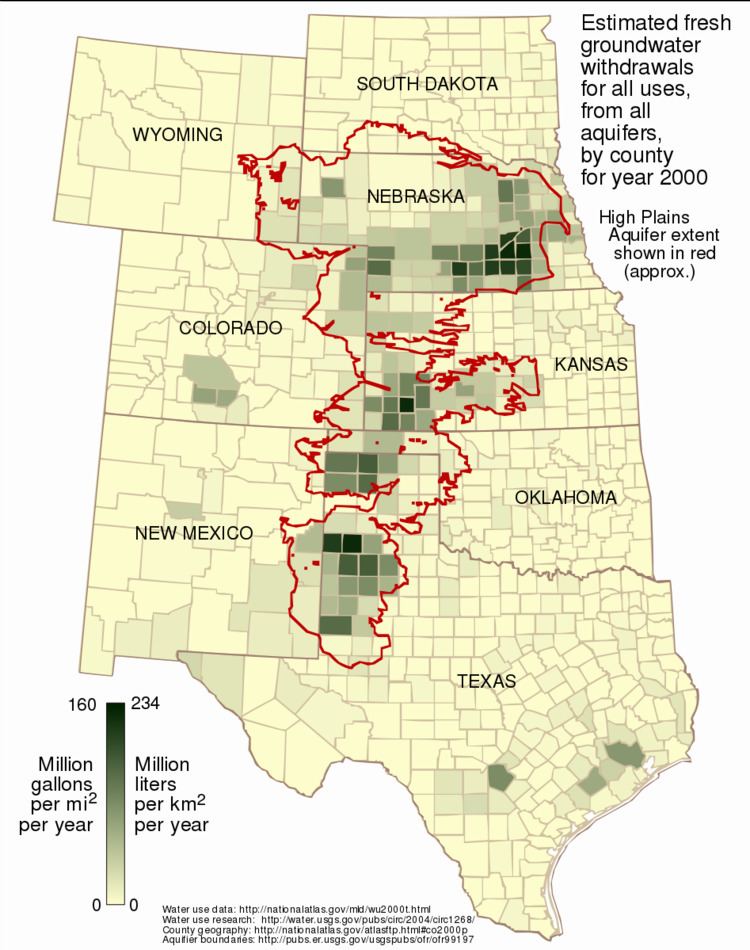Aquifers in the United States, groundwater basins in the country.
An example of a significant and sustainable carbonate aquifer is the Edwards Aquifer in central Texas. This carbonate aquifer has historically been providing high quality water for nearly 2 million people, and even today, is completely full because of tremendous recharge from a number of area streams, rivers and lakes. The primary risk to this resource is human development over the recharge areas.
(Text) CC BY-SA

